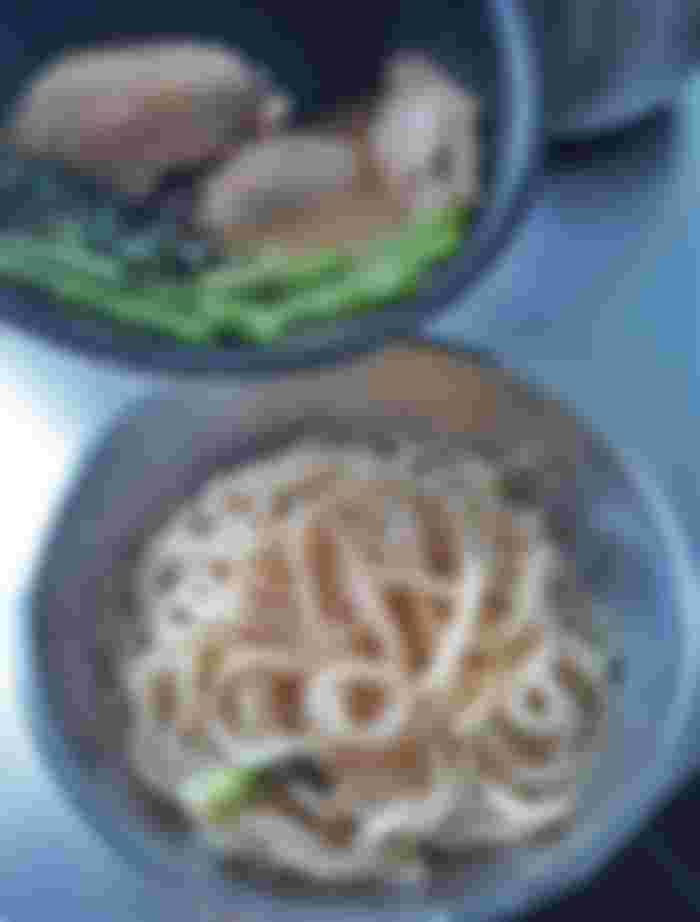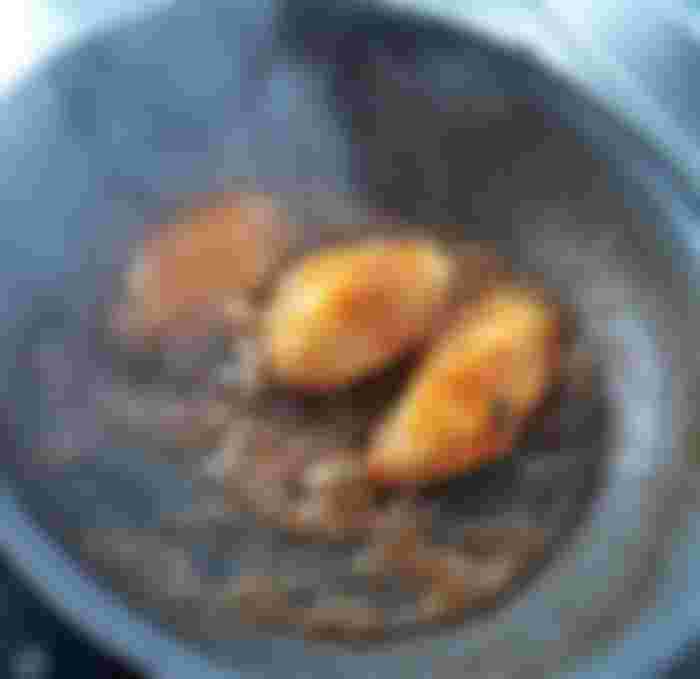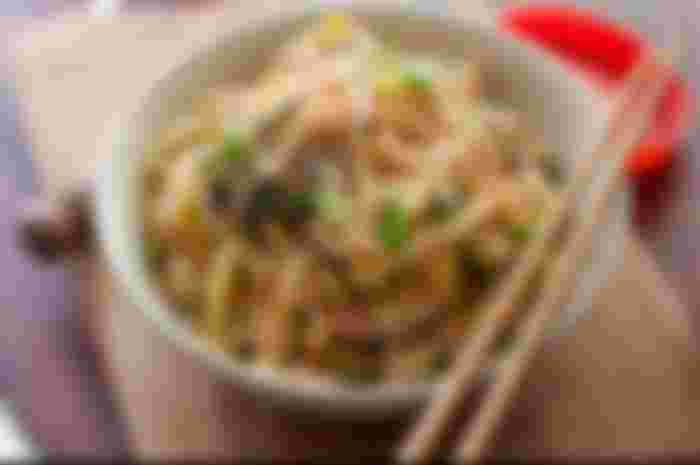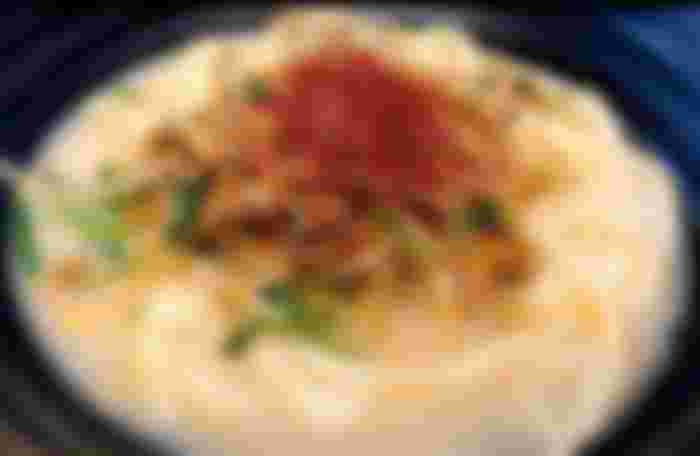Udon is a kind of thick noodles made from wheat-flour which is frequently used in Japanese cuisine but Chinese have their own version as well. It is often serve hot and commonly toppings are tempura, deep-fried tofu seasoned with sugar, soy sauce and mirin. At home, we have that Japanese sauce for different kind of noodles. I often used that sauce when cooking udon instead of adding sugar, soy sauce and mirin.
And today, I will share to you a simple and easy cooking of udon with only few ingredients.
MAIN INGREDIENT:
Udon
TOPPINGS AND SEASONINGS:

Chicken wings (pre-cooked, for toppings)
Beans and bok choy (additional toppings)
Japanesr sauce
Sugar and dark soy sauce (for cooking chicken wings)
METHODS:
Cook the udon in a skillet/pan

Add the pre-cooked chicken wings and vegetables on top. Simer for few more minutes until the vegetables soften.

Season with Japanese sauce. If you don't have Japanese sauce for noodles, you can use soy sauce, sugar and mirin. Season it according to your taste preference.

Set aside the noodles and vegetables retaining the chicken wings.

Using the remaining liquid, cook the chicken wings and add dark soy sauce and sugar. (If you don't want to add more flavor to the chicken wings, you can skip this step)

Cook the chicken wings while stirring for few more minutes until the sauce coated the chicken wings.

Dish out the chicken wings and serve udon with the toppings.

You can choose any toppings you like if you want to cook udon.
FACTS:
Udon is originally made in Japan and many stories explained how Udon was made.
In AD 1241, a Rinzai monk named Enni, introduced flour milling technology from Song China to Japan. Flour crops where then made into noodles such as udon, soba and pancakes which were eaten by locals. The milling technology r eventually spread around the country.
During the Nara period, there were 14 kinds of confection introduced by Japanese envoy while being in China during the Tang Dynasty. One of them was called sakubei (索餅), which was listed as muginawa (牟義縄) in Shinsen Jikyō (新撰字鏡), a dictionary which was published in the Heian Era. It is believed that muginawa is the origin of many kinds of Japanese noodles. However, the muginawa in Shinsen Jikyō was made with wheat and rice flour.
Another story claimed that konton was the original name of the noodle, made with wheat flour and sweet fillings.
And another story says that during the Heian Era, Kukai, a Buddhist priest, introduced udon noodles to Shikoku. It says that at around the beginning of the 9th century, Kūkai traveled Tang China to study. The first province to adopt udon noodles from Kūkai was said to be Sanuki Province and Hakata claimed to have produced udon noodles based on Enni's recipe.

Udon is also serve in some hot pot and Japanese sushi restaurants in Hong Kong. It is usually serve with Japanese flavor soup (at Japanese sushi restaurants) and chinese flavor soup (at hotpot restaurants).

In Korea, udon dishes are served in numerous Japanese restaurants, while the Korean-style udon noodle soups are served in bunsikjip (snack bars) and pojangmacha (street stalls). Both types are called udong (우동), which is the transliteration of the Japanese word udon.

In Palau, there is also a dish called udon influenced bu the former Japanese administration. The broth is soy sauce–based like Japanese udon. However, as there were many immigrants from Okinawa, it uses less broth like Okinawa soba. Most notably, the noodle is that of spaghetti, as it is easier to acquire there.
Source: https://en.m.wikipedia.org/wiki/Udon
IMPACT OF INSTANT NOODLES IN SOUTH KOREA, JAPAN AND CHINA:
Instant noodles are known for being an inexpensive, quick to prepare, and filling food item. The origin of instant noodles is tied to the introduction of ramen noodles to China through noodle dishes from the Chinese, with origins dating back to the 1660s during the rule of Tokugawa Mitsukuni. Demand for ramen noodles increased in Japan post-World War II, when the United States saturated the Japanese market with cheap wheat flour to compensate for Japan’s poor harvest and Japanese troops were returning home from China.
From Japan, instant noodle technology spread to South Korea and China, where they were introduced in the early 1960s and became popular. In Japan, South Korea, and China, instant noodle dishes reflect the tastes and noodle dishes of their respective cultures, which allowed them to thrive in their respective regions.
As a solution to waiting in long lines in Japan to an inexpensive meal that became popular among college students, instant noodles have become a prominent food product in Japan, South Korea, and China. The instant noodle also adapted to the tastes of the people of Japan, South Korea, and China, which allowed it to thrive in all three countries as a prominent form of noodles. Although excessive consumption has been linked to health issues, instant noodle companies are coming up with alternative processing techniques to make instant noodles a viable meal option. As instant noodle products continue to evolve and spread globally, perhaps one day they might truly become a “food of the people” across all cultures.
Related Articles:
I Tried To Cook Traditional Chinese Macaroni Soup From Leftovers
She Told Me To Cook (Cheesy Macaroni Recipe)
Food Photography (Shabu-Shabu a.k.a. Hotpot)
Food Pphotography (Random Hong Kong Recipes)

...and you will also help the author collect more tips.












I love udon and I like how you caramelized the chicken at the end. It feels like chicken teriyaki almost :) What is Japanese sauce? Is it soy sauce?